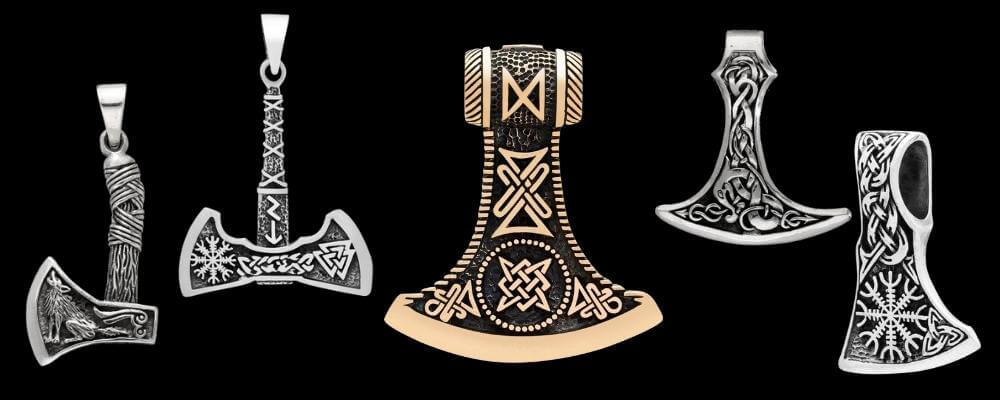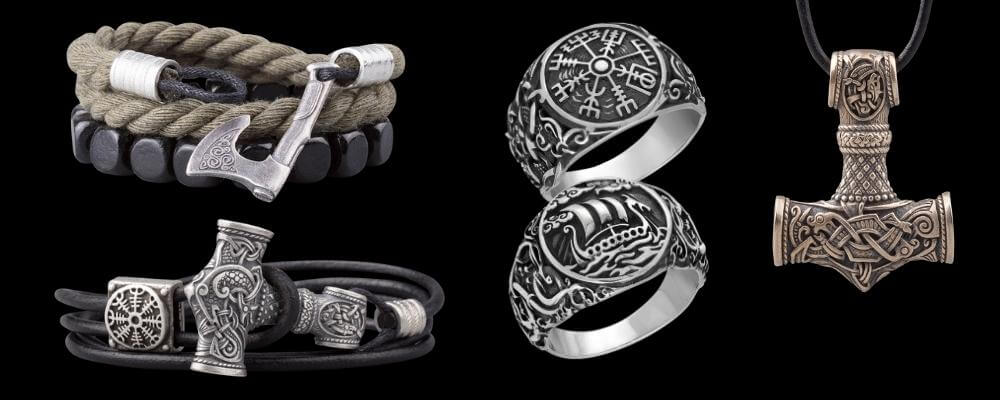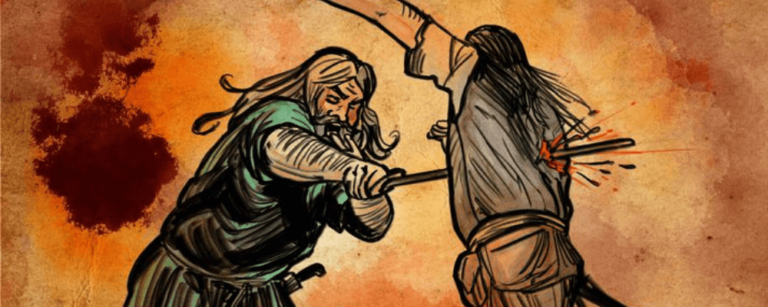It is well known that the Viking sagas tell the stories of the most impressive Viking heroes, but are they all to be taken seriously?
The saga of the infamous Viking poet and warrior Egill Skallagrimsson reads more like Monty Python’s Life of Brian than like the story of a true Viking hero.
The saga is fantastical and clearly has the purpose of representing an extreme stereotype of a Viking as a caricature.
But while this tongue-in-cheek account needs to be taken with a grain of salt, it does reveal much about perceptions of the Vikings.
Egill’s Saga
The life of Egill Skallagrimsson is told in Egill’s Saga, a work written in the 13th century. It is often attributed to the prolific Viking commentator Snorri Sturluson, but the evidence that his hand is behind the script is quite weak.
The story does seem to be based on a real person, Egill Skallagrimsson, who was born in Iceland in around 910. He was the son of settlers that had fled Norway due to a feud with the Norwegian king Harald Finehair.
Egill was a skaldic poet, composing poems about the great people of the day. But that is all that we can say about him for sure.
The rest of the story recorded in the saga is more of an exaggerated farse, perhaps based on the stories that Egill told about himself to entertain his audiences.
Young Egill
The stories recorded about Egill are designed to present him as a Viking scoundrel. He is an impressive warrior and a talented poet, but seems to have no moral code. This may reflect Christian attitudes towards the Vikings at the time of the saga’s composition.
Egill seems to have demonstrated that he was extraordinary from a very young age, revealing his talents as a poet at the tender age of three, when most children are struggling to string words together.
Apparently, his father refused to take the infant Egill to a party with the rest of the family, complaining that his behavior was terrible when sober, so he dreaded to see what the infant would be like drunk.
But Egill, refusing to be left behind, steals a horse and rides to the party. There he delivers a fantastic verse to the party’s host, who is so impressed that he allows the infant to stay.
Egill shows his warrior prowess at the age seven. He is playing with a group of boys, and an older boy is beating and humiliating him, so Egill strikes the boy in the head with an axe, killing him. In the fight that followed, seven men died.
When Egill returned home, his father was furious, but his mother notes that he has the makings of a true Viking warrior.
And Egill goes on to fulfil this promise. According to his own account of his exploits,, he burns barns, killed a miser and a troublesome berserker, twice took on and defeated eleven men on his own, used his teeth to tear out one man’s throat, and used his finger to gouge out the eye of another man, leaving it hanging down his cheek.
Egill and Eric Bloodaxe
Every protagonist needs a nemesis, and Egill finds his in Eric Bloodaxe, the son of Harald Finehair.
After the death of King Harald, Egill and his family are able to return to Norway, but it is not long before they find themselves in conflict with the new king.
The problem begins when Egill arrives in Norway, with his brother Thorolf and their group of Viking warriors.
They encounter a kinsman of Queen Gunnhild, Eric’s wife, and ask him for food and drink at a tavern.
He claims that he does not have any, but this is a lie because he is also throwing a feast for the king and his men and does not want to share his stores.
This does not stop Egill having a good time, and apparently he gets so rowdy that he begins to disturb the part of the king.
This annoys Bard and Gunnhild, who is also present, so they decide to poison Egill.
But Egill is suspicious, and also well versed in the magical uses of the runes. He draws a rune of his cup and it explodes due to the presence of the poison. Realizing what has happened he kills Bard.
Enraged, the queen sends her two brothers to kill Egill, but he kills them as well. The enmity between Eric Blood Axe and Egill Skallagrimsson is set.

The tricky Egill manages to escape and have the price on his head paid, but still leaves Norway and goes to work as a mercenary in Britain with his brother.
But when his brother is killed in Scotland, Egill resolves to return to Norway to marry his widowed sister-in-law and claim his inheritance.
But when Egill arrives, he discovers that Eric Bloodaxe has already given away his lands. In the conflict that follows, Egill kills Rognvald, the son of the king, and uses the runes to place a curse on Eric and Gunnhild.
He does not encounter the two again until he unexpectedly sees them in York in Britain. There he is taken into custody and held overnight for execution the next day.
But Egill manages to secure his freedom, as during the night he composes a 22-stanza poem praising the king. Eric is so impressed that he sets Egill free.
After this, Egill returns to Iceland, where he takes over the lands of his father and lives until he is around 80 years old, when he dies of natural causes.
Egill the Poet
It was Egill’s skill as a poet that saved his life from King Eric, and it is the thing for which he is most well-known. His most famous poem is one that he composed after the death of his two sons.
He had resolved to starve himself in grief for their loss, but his daughter tricks him into eating, and then suggests that he at least compose a poem for his sons before he dies himself. He does so, and also decides that he will live.
The poem is interesting in that it complains that Odin stole his sons and compensated him with a poor bit of poetry.
This reflects the fact that Odin was both a god of death, taking those who die bravely to Valhalla, and also the god of poetry, having shared the Mead of Poetry with mankind.
Egill is also described on several occasions as using the runes for magical purposes. He draws a rune on his cup to detect poison, and also uses the runes to curse Eric and Gunnhild. Viking warriors were commonly credited with being masters of the runes.
Egill the Berserker
Egill is described as a Viking warrior, but one with more of a heated head than fine skill. Perhaps this suggests that he had the temperament of a berserker.
According to the saga, one of Egill’s sons dug up his body after his death, and that Egill’s exhumed skull was hit with an axe. But rather than shattering, it went white. This suggests the kind of superhuman strength that a berserker may have possessed.
Some modern interpreters have suggested that this may be a sign that Egill had Paget’s disease. This causes thickening of the bones and mental derangements, both symptoms that may well have suited a Viking berserker.
Fact or Fiction
But how much of Egill’s story is fact and how much is fiction is far from clear. He appears as a caricature of what a Viking should be.
Whether this is something that came out of the imagination of the writer of Egill’s Saga, or is some self-deprecating humor that was present in Egill’s own poems, is unclear.
What do you think of Egil Skallagrimsson?








